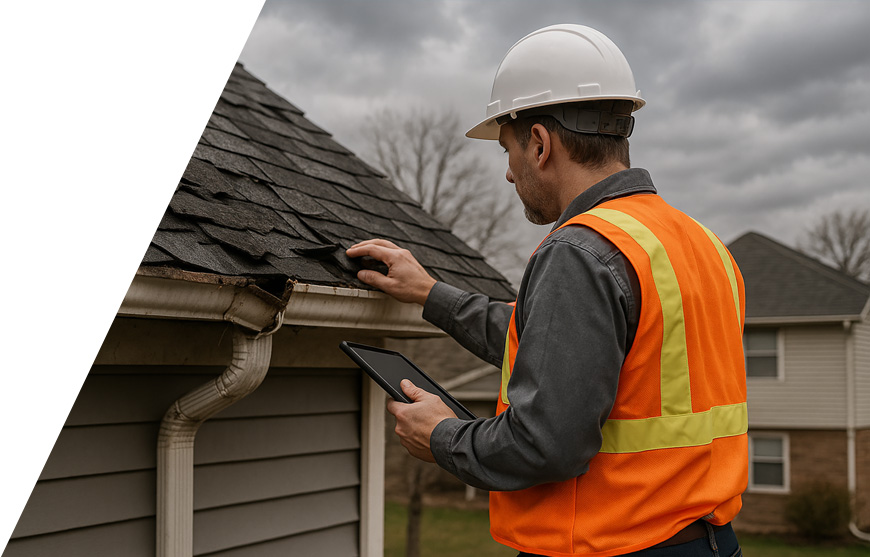Is your field service team dealing with slow processes and too much paperwork? Picture this. A simple tech upgrade that could make your operations better, save money, and make customers happier. That game-changing technological advancement is here—smart sensors are changing how field service works. Think about it—adding sensor tech to your systems and equipment opens up a bunch of data and insights. It’s set to transform how your teams get things done.
Smart sensors in field service
Smart sensors and IoT sensors are revolutionizing field service operations. They are sophisticated devices equipped with cutting-edge technologies that can collect and transmit field service data while monitoring various parameters that can be used for better decision-making. The sensors capture real-time information about field service performance, laying the foundation for optimizing operations and efficiency.
A manufacturer using smart sensor technology might predict machine failures before they happen. They would send technicians only when it is required. It’s similar to how smart home devices like thermostats allow homeowners to reduce energy consumption. Or how a smart fridge detects temperature changes and keeps your food fresh. Thus, leveraging smart sensors in commercial applications saves costs and delights customers with faster service.
Monitor equipment remotely
Service teams gain real-time control over operations by remote sensing equipment and systems through online dashboards, optimizing efficiency and preventing costly breakdowns. Sensors provide a cost-effective and efficient means of assessing equipment health and performance without the need for on-site inspections. Also, sensor-driven performance analytics play a crucial role in minimizing equipment downtime.
Through predictive maintenance capabilities, anomalies and potential malfunctions can be identified and corrected before mechanical or electrical failure can occur. Analytics tools delve into operating parameters, detecting subtle performance deviations that might go unnoticed during routine inspections. This proactive approach enables preventative interventions, minimizing disruption and ensuring timely, cost-effective repairs.
Increase automation
Smart sensors, AI, and automated responses are the future of equipment. They are self-aware and self-diagnosing, powered by integrated sensor networks. By analyzing complex patterns within sensor data, these systems can predict potential failures with remarkable accuracy and trigger pre-emptive interventions like automated shutdowns to avert costly damage. Customer experience is enhanced using predictive maintenance by enabling the proactive dispatch of technicians before clients experience disruptions.
Smart sensors, clever computers, and automated tools are about to change the way we fix things. This means field service teams will do their jobs even faster, use resources smarter, and keep customers happier than ever before.
As these technologies become increasingly sophisticated, we’ll see a dramatic shift towards a future where equipment manages itself. Instead of reacting to problems, proactive interventions and preventive actions will become the norm. This will completely reshape the field service landscape, transforming it into a model of proactive care and optimized equipment performance.
A promising future
While smart sensors offer clear benefits, implementing them in field service operations also brings challenges like managing vast amounts of data, ensuring connectivity, and addressing cybersecurity risks. However, continued progress in sensor technology, Al, 5G, and edge computing will help overcome these obstacles and unlock the full potential of smart sensors to optimize field service delivery. The future is autonomous, highly efficient field service driven by intelligent loT ecosystems. Smart sensors are making that future a reality.
Transforming field Service with sensor-driven insights
Smart sensors are revolutionizing field service operations. Providing real-time data and insights enables efficiency in major aspects.
Predictive maintenance
Studies show that predictive maintenance can reduce machine downtime by 30%-50% and increase machine life by 20%-40%. Smart sensors transform the reactive nature of maintenance into a proactive and data-driven approach, ensuring that field service businesses can address potential problems before they impact operations. In turn, it allows for an increase in equipment reliability and overall operational efficiency. Sensors capture a wealth of data on performance metrics for any field service business.
The data is analyzed to identify patterns and anomalies that may signal impending issues. Predictive models generate power businesses to anticipate potential failures in customers’ equipment before they occur, which allows field service businesses to take a proactive intervention. This kind of proactive approach not only minimizes unplanned downtime but also allows for optimized scheduling of maintenance activities.
Improved first-time fix rates
Smart sensors provide real-time alerts and diagnostics, enabling technicians to come prepared with the right information, tools, and parts to fix issues efficiently. With access to data-driven insights before they even arrive, the likelihood of resolving problems on the first visit increases by up to 20%, as per some estimates. This not only accelerates issue resolution but also boosts customer experience while minimizing the need for repeated service dispatches.
Optimized field operations
Smart sensor data enhances scheduling, routing, and workforce optimization in a simplified and effective way. Service teams get a clear view of their workload, travel times, and job durations, allowing for improved planning and technician dispatch. By integrating sensor data with field service management software, tasks like scheduling preventative maintenance and assigning work orders based on location and skills become automatic, adapting to changing conditions seamlessly.
Looking ahead, the future of field service relies on the integration of IoT devices and machine learning to extract deeper insights from smart sensor data. This evolution includes self-diagnosing equipment, automated issue resolution, and fully optimized field operations. While human roles remain vital, the infusion of data-driven intelligence is reshaping field service operations for greater efficiency.
The increasing prevalence of smart sensors marks a shift towards predictive, personalized, and automated field service. The rewards for organizations embracing this technology are significant—satisfied customers, reduced costs, and enhanced productivity. Smart sensors serve as the cornerstone for the next era of field service excellence.
Challenges and considerations in implementing smart sensors
While smart sensors offer many benefits for field service operations, implementing them does come with some challenges and considerations.
Cost
Incorporating smart sensor technology might need a significant initial investment, covering the cost of the sensors and the necessary infrastructure. While this upfront expense might seem substantial, many businesses discover that the long-term savings and increased efficiency more than makeup for it. Smart sensors, by enabling predictive maintenance, help prevent expensive equipment breakdowns and reduce downtime, ultimately proving to be a wise investment in the long run.
Data security
Smart sensors bring about worries regarding data security. The information gathered by sensors can be at risk if not adequately protected. To address this concern, companies should implement safeguards such as data encryption, robust password policies, control over employee access, and routine audits. These steps help reduce the chances of a data breach and ensure the safety of collected data.
Integration difficulties
Due to integration issues, adding smart sensor technology to companies with older equipment and systems can be challenging. Making sure that smart sensors work well with other software and equipment is crucial for reaping their full benefits. This might mean making changes to current processes and updating outdated infrastructure. While it could be a bit complex, many field service providers provide assistance to companies to make the shift to smart sensor solutions smoother.
Resistance to change
Some field service technicians and managers may be hesitant to embrace smart sensor technology, especially if they are set in their ways. It can be difficult for people to adopt new systems and processes that significantly change their day-to-day work routines. With proper training and highlighting the benefits to individuals, companies can help address concerns and get all team members on board to ensure the success of smart sensor implementation.
With the right planning and support in place, the challenges of implementing smart sensors can be effectively managed. The rewards of enhanced efficiency, reduced costs, and improved customer service make overcoming any obstacles well worth the effort. Smart sensors are transforming field service operations for the better, and with consideration of key challenges, companies of all sizes can join in the revolution.
Beyond efficiency: Additional benefits of smart Sensors
Beyond efficiency, smart sensors provide several additional benefits to field service organizations.
Improved safety
Smart sensors are also known for making field service safer. They are able to quickly spot dangers like gas leaks, equipment getting too hot, or structural problems. These sensors give instant alerts, helping technicians stay away from potential risks. This early warning stops accidents and lets field teams be careful before starting a job, making the work environment safer overall. Using smart sensors is a big step forward in protecting field service professionals’ well-being.
Better diagnostics
Sensors give a continuous flow of data about how equipment is doing. Over time, algorithms can study this data to find anything unusual, see patterns, and even predict when parts or systems might have problems. When technicians come to the site, they already have a good idea of what’s wrong and where to check, along with knowing what tools or parts they might need.
Optimized maintenance
Rather than sticking to a rigid schedule, smart sensors enable predictive and condition-based maintenance. Field teams only need to service equipment when sensors indicate it’s actually necessary. This avoids wasting time and money on unnecessary maintenance calls. It also reduces the risk of parts failing prematurely due to over-maintenance.
Improved customer service
With smart sensors providing detailed data and diagnostics, field technicians can resolve problems faster and more accurately. They have insight into the equipment’s operating history and can see how environmental conditions may have contributed to issues. This level of knowledge and efficiency leads to higher first-time fix rates, less downtime for customers, and an overall improved experience.
Opportunities for product innovation
The data and insights gained from smart sensors allow technicians to make ongoing improvements to equipment and systems. They can see how different components and parts perform in real-world conditions over long periods. This information fuels innovation as companies work to enhance efficiency, durability, and functionality based on data-driven feedback.
The integration of smart sensors is transforming field service in exciting ways. While the initial motivation may be to gain operational efficiencies, the additional benefits to safety, diagnostics, maintenance, customer service, and product innovation are substantial. Smart sensors are key to unlocking long-term success for organizations looking to future-proof their business.
Final thoughts
The future of field service looks bright, thanks to smart sensors. Despite the initial cost, the efficiency, productivity, and customer happiness improvements make their adoption a smart move. As technology gets better, the price goes down, and what smart sensors can do expands. They’re positioned to change field service in exciting ways. If you haven’t started using them yet, now’s the time. Staying up-to-date ensures continuing to provide your customers with the best service. The smart sensor revolution isn’t just coming—it’s already here. So, are you ready to be part of the change? Join the future of field service by adopting smart sensors and bringing increased service excellence to your operations. Leverage field service management software to boost your field service business growth. To learn more about how Zuper, the most customizable field service management software, can transform your business, book a free demo with us here.





